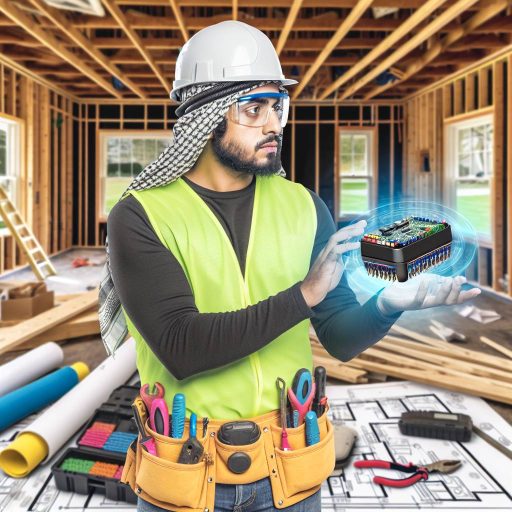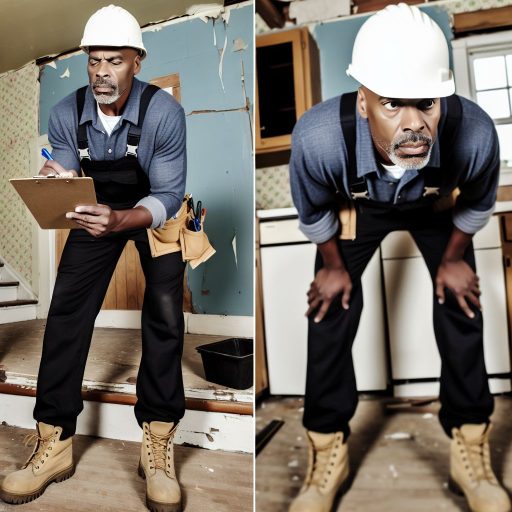Understanding ROI in Real Estate
Key Metrics of ROI
Return on Investment (ROI) measures the profitability of a real estate investment.
Investors use ROI to evaluate potential projects.
Key metrics associated with ROI include cash flow, appreciation, and tax benefits.
Cash flow represents the net income generated by the property.
Appreciation reflects the increase in property value over time.
Tax benefits allow investors to deduct certain expenses from their taxable income.
Understanding these metrics helps investors make informed decisions.
The Importance of ROI
ROI is crucial in assessing real estate investments.
High ROI indicates a profitable investment opportunity.
Conversely, low ROI suggests that an investment may not be worth pursuing.
Investors can compare different properties by calculating their expected ROI.
This comparison aids in selecting the most lucrative real estate opportunities.
Ultimately, a solid understanding of ROI enhances investment strategies.
Factors Affecting ROI
Multiple factors influence ROI in real estate investments.
Market conditions play a significant role in property values.
Location is critical; properties in desirable areas typically yield higher returns.
Also, property management quality can impact cash flow and appreciation.
Fluctuations in interest rates can alter financing costs and net returns.
Finally, effective renovation and maintenance increase property value.
Assessing Your Property: Identifying High-Impact Renovation Areas
Understanding Your Property’s Value
Begin by evaluating the current market value of your property.
Research similar properties in your neighborhood.
Identify features that attract buyers in your area.
Consider engaging a real estate agent for insights.
They can provide a comparative market analysis.
Assessing the Condition of Your Home
Conduct a thorough inspection of your property.
Look for signs of wear and tear.
Pay attention to crucial areas like roofs and foundations.
Identify any plumbing or electrical issues.
Document everything for planning your renovations.
Identifying Key Renovation Areas
Focus on areas that significantly impact property value.
Kitchen and bathroom renovations typically yield the highest returns.
Consider updating appliances and fixtures for a modern look.
Enhancing curb appeal is equally important.
Landscaping and exterior paint can create a great first impression.
Setting Budget and Priorities
Create a realistic budget for your renovation projects.
Prioritize renovations based on their expected ROI.
For example, focus on kitchen upgrades before other areas.
Allocate a portion of your budget for unexpected expenses.
This will help you avoid financial strain during renovations.
Evaluating Local Market Trends
Stay informed about local real estate trends.
Identify which renovations are currently in demand.
Consult with local real estate agents for their expertise.
They can provide insights on timing and buyer preferences.
Adjust your renovation plans based on their feedback.
Budgeting for DIY Renovations
Understanding Costs
Start by estimating the overall costs of your renovation project.
Identify the materials you will need for each area.
Consider not only the purchase price but also shipping and potential taxes.
Research local prices to ensure you get the best deal possible.
Explore various suppliers to compare offerings effectively.
Creating a Realistic Budget
List out all necessary costs to create a comprehensive budget.
Include costs for materials, tools, and unexpected expenses.
Set a contingency fund of at least 10% of the total budget.
This fund will help you manage possible surprises along the way.
Cost-effective Strategies
Consider DIY options for simpler tasks to save money.
Engage friends or family for help with labor-intensive jobs.
Utilize recycled or salvaged materials for significant savings.
Keep an eye on local resale shops for gently used items.
Planning and Prioritizing
Break your project into manageable phases to reduce financial strain.
Prioritize renovations based on their potential ROI.
Focus first on improvements that increase property value significantly.
Consider cosmetic updates that yield immediate visual impact.
Documenting Expenses
Keep detailed records of all expenses throughout the project.
Use spreadsheets to monitor spending against your budget regularly.
Review and adjust your budget as needed for remaining tasks.
This will help you stay on track and avoid overspending.
Evaluating Return on Investment
Once renovations are complete, evaluate how they affect property value.
Consult with local real estate agents for insights on market trends.
Understand which improvements yield the highest returns in your area.
Adjust your plans for future renovations based on this feedback.
Delve into the Subject: Property Development Strategies For First-Time Real Estate Investors
Trendy Upgrades that Sell: Material and Design Choices
Choosing High-Quality Materials
Opting for high-quality materials boosts the value of your property.
For flooring, consider hardwood or luxury vinyl planks.
Both options are durable and appealing to buyers.
When it comes to countertops, select quartz or granite.
These materials are not only stylish but also long-lasting.
Additionally, investing in energy-efficient windows pays off.
These improvements can significantly lower energy costs for future owners.
Incorporating Popular Design Trends
Staying current with design trends attracts potential buyers.
Open floor plans continue to be highly desirable.
They create a spacious and modern feel in any home.
Neutral color palettes are favored in today’s market.
They provide a blank canvas for new homeowners to personalize.
Consider adding smart home technology as well.
This feature appeals to tech-savvy buyers.
Enhancing Outdoor Spaces
Outdoor areas greatly enhance a home’s appeal and value.
Create a welcoming entryway with attractive landscaping.
Well-placed plants and flowers draw positive attention.
Adding a deck or patio extends living space outside.
These additions are ideal for entertaining and relaxation.
Also, consider low-maintenance options like synthetic turf.
This keeps yards looking great with minimal effort.
Maximizing Space with Smart Layouts
Efficient use of space makes a home more appealing.
Consider built-in storage solutions to maximize space.
They help reduce clutter and enhance organization.
Additionally, utilizing open shelving in kitchens can look modern.
It adds both style and functionality to the area.
Employing multi-functional furniture is also beneficial.
These pieces save space while providing utility.
Learn More: Understanding Financing Options For Property Development Projects
Maximizing Curb Appeal: Exterior Renovations to Increase Value
Importance of Curb Appeal
Curb appeal greatly influences a buyer’s first impression.
A well-maintained exterior makes your home more attractive.
It also signifies proper upkeep and care.
Refreshing the Exterior Paint
Choosing the right paint color can brighten your home’s appearance.
Light, neutral colors often appeal to a wider audience.
Consider high-quality, weather-resistant paints for durability.
Always clean the surface before painting.
Lastly, fresh paint can transform and modernize the entire look.
Landscaping Improvements
Investing in landscaping enhances overall property value.
Start by trimming overgrown bushes and trees.
Add vibrant plants and flowers for color.
Incorporate mulch for a neat appearance.
Consider installing a pathway to guide visitors.
Upgrading the Entryway
Your front door acts as the focal point of your home.
Upgrade to a stylish, modern design for instant allure.
Paint the door a bold color to create contrast.
Enhance lighting fixtures near the entry for safety and ambiance.
Consider adding a welcoming mat or decorative wreath.
Outdoor Living Spaces
Creating an outdoor living area increases functionality and appeal.
Adding a deck or patio provides extra space for entertaining.
Incorporating outdoor furniture can enhance this area.
Consider shade structures like pergolas for comfort.
These improvements can attract buyers seeking lifestyle options.
Roof and Gutter Maintenance
A well-maintained roof is crucial for home protection.
Inspect for missing shingles and leakages regularly.
Clean gutters to prevent water damage and foundation issues.
Consider replacing or repairing if necessary.
This will assure buyers of a sound investment.
Lighting Enhancements
Effective exterior lighting increases security and aesthetics.
Install lights along pathways and entry points.
Utilize LED fixtures for energy efficiency and cost savings.
Landscape lighting can showcase garden features beautifully.
Overall, attractive lighting enhances nighttime curb appeal.
Gain More Insights: DIY Curb Appeal Upgrades To Increase Real Estate Value

Interior Upgrades: Kitchen and Bathroom Renovations that Pay Off
Kitchen Renovations that Maximize Value
Upgrading your kitchen can greatly increase your home’s value.
Focus on modern appliances to attract potential buyers.
Consider installing energy-efficient models for added appeal.
Cabinet refacing is a cost-effective way to update the look.
Choose neutral colors to appeal to a broader audience.
Additionally, adding a stylish backsplash can enhance aesthetics.
Open shelving creates a modern feel and offers functionality.
Investing in durable countertops, such as quartz, can be worthwhile.
Lastly, improve lighting to create a bright and welcoming atmosphere.
Smart Bathroom Updates
Bathroom renovations also yield high returns on investment.
Start by focusing on fixtures; modern faucets can make a big difference.
Consider updating the bathtub or shower for increased appeal.
A fresh coat of paint can breathe life into any bathroom.
Incorporating tile accents can add a luxurious feel.
Installing a double vanity can enhance usability and storage.
Ensure that your bathroom features adequate lighting and ventilation.
Energy-efficient toilets are both cost-effective and eco-friendly.
Additional Tips for Interior Upgrades
Before starting renovations, set a realistic budget and timeline.
Research local market trends to understand potential ROI better.
Always prioritize repairs over cosmetic upgrades to attract buyers.
Consult with a professional for guidance on significant projects.
Finally, consider staging the space to highlight its best features.
Delve into the Subject: Creative DIY Storage Solutions For Real Estate Renovations
Energy Efficiency Improvements
Eco-friendly Renovations with ROI
Maximizing your real estate investment requires smart renovations.
Energy efficiency improvements stand out as a practical choice.
These upgrades reduce utility costs while increasing property value.
Benefits of Energy Efficiency
Energy-efficient homes are more attractive to buyers.
Potential buyers often prioritize lower energy bills.
Additionally, energy-efficient homes contribute positively to the environment.
This eco-friendly approach can enhance your market appeal.
Key Renovation Areas
Focus on areas that yield significant returns.
- Insulation upgrades are crucial for energy conservation.
- Energy-efficient windows enhance comfort and reduce heating costs.
- Consider Energy Star-rated appliances for improved efficiency.
- Smart thermostats allow for better temperature control.
Choosing the Right Materials
Select sustainable materials for your renovations.
Recycled, reclaimed, or certified green products are great options.
These choices not only boost efficiency but also promote sustainability.
Financing Eco-friendly Renovations
Explore financing options specifically for energy-efficient upgrades.
Many programs offer incentives or rebates for eligible improvements.
Research local and federal initiatives to take advantage of savings.
Monitoring Energy Savings
After renovations, monitor your energy usage closely.
Track savings to understand the financial benefits over time.
Use this data for future renovations and improvements.
DIY Tips for Labor Management: Efficient Project Planning and Execution
Defining Your Project Scope
Establish a clear project scope before starting any renovation.
This definition includes the tasks and goals you intend to accomplish.
A well-defined scope helps prevent project creep.
Engage with stakeholders for their input and expectations.
Be sure to document everything for future reference.
Creating a Detailed Timeline
A detailed timeline is crucial for effective project management.
List all tasks required for the renovation process.
Assign realistic deadlines to each task to maintain momentum.
Utilize project management tools to visualize and track progress.
Regularly review the timeline and adjust as necessary.
Assembling Your Team
Choose a team based on skills and experience relevant to your project.
Host a kickoff meeting to outline expectations and responsibilities.
Encourage open communication within the team for smoother collaboration.
Consider hiring subcontractors for specialized tasks when needed.
Evaluate personnel options based on flexibility and availability.
Effective Resource Management
Evaluate your budget thoroughly before purchasing materials.
Source materials from multiple suppliers to find the best deals.
Plan for unexpected expenses to avoid budget overruns.
Track inventory closely to manage usage and minimize waste.
Implement a system for monitoring resource allocation.
Mantaining Motivation and Morale
Keep the team motivated with clear communication and recognition.
Establish a positive work environment that encourages feedback.
Celebrate milestones to boost team morale and productivity.
Provide opportunities for team members to share ideas and solutions.
Regular check-ins can enhance team cohesion and focus.
Documenting Progress
Regular documentation of progress keeps everyone informed.
Use photos and written reports to track development stages.
Share these updates with all stakeholders periodically.
This practice builds trust and transparency throughout the project.
Continue to refine documentation practices throughout the renovation.
Additional Resources
What’s the average profit margin on a typical home renovation (flip …
Flipping Houses: How It Works, Where to Start, and 5 Mistakes To …




